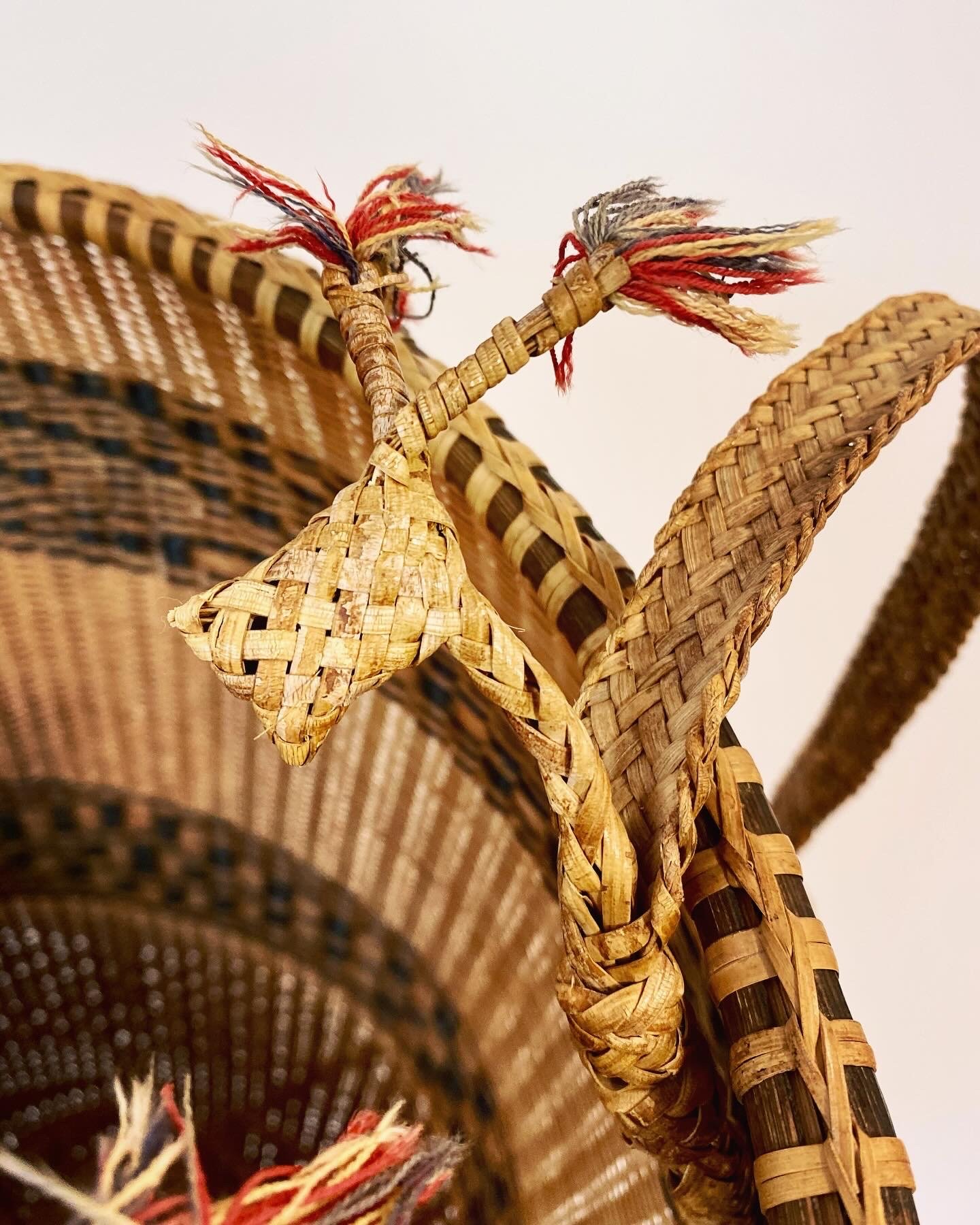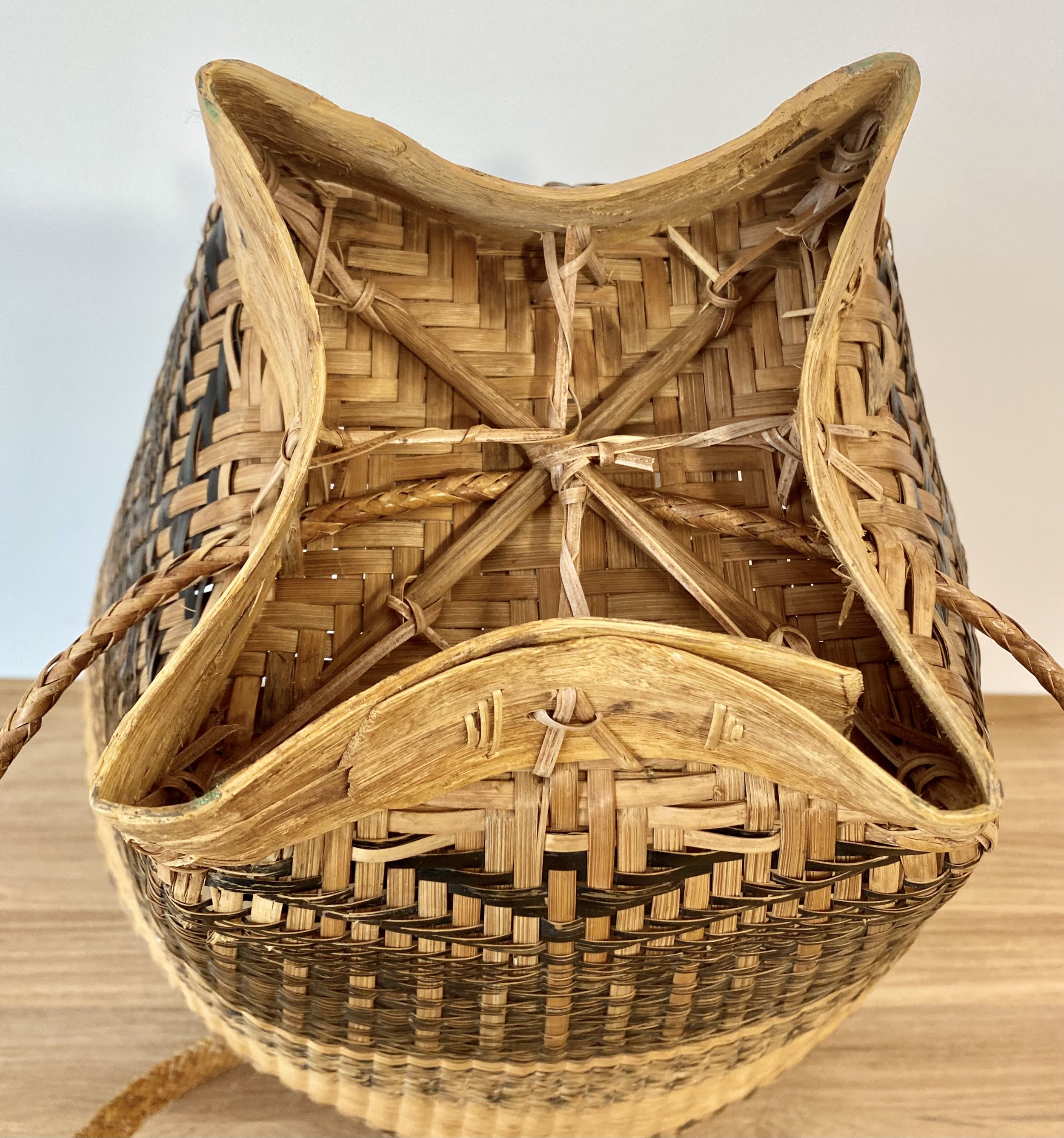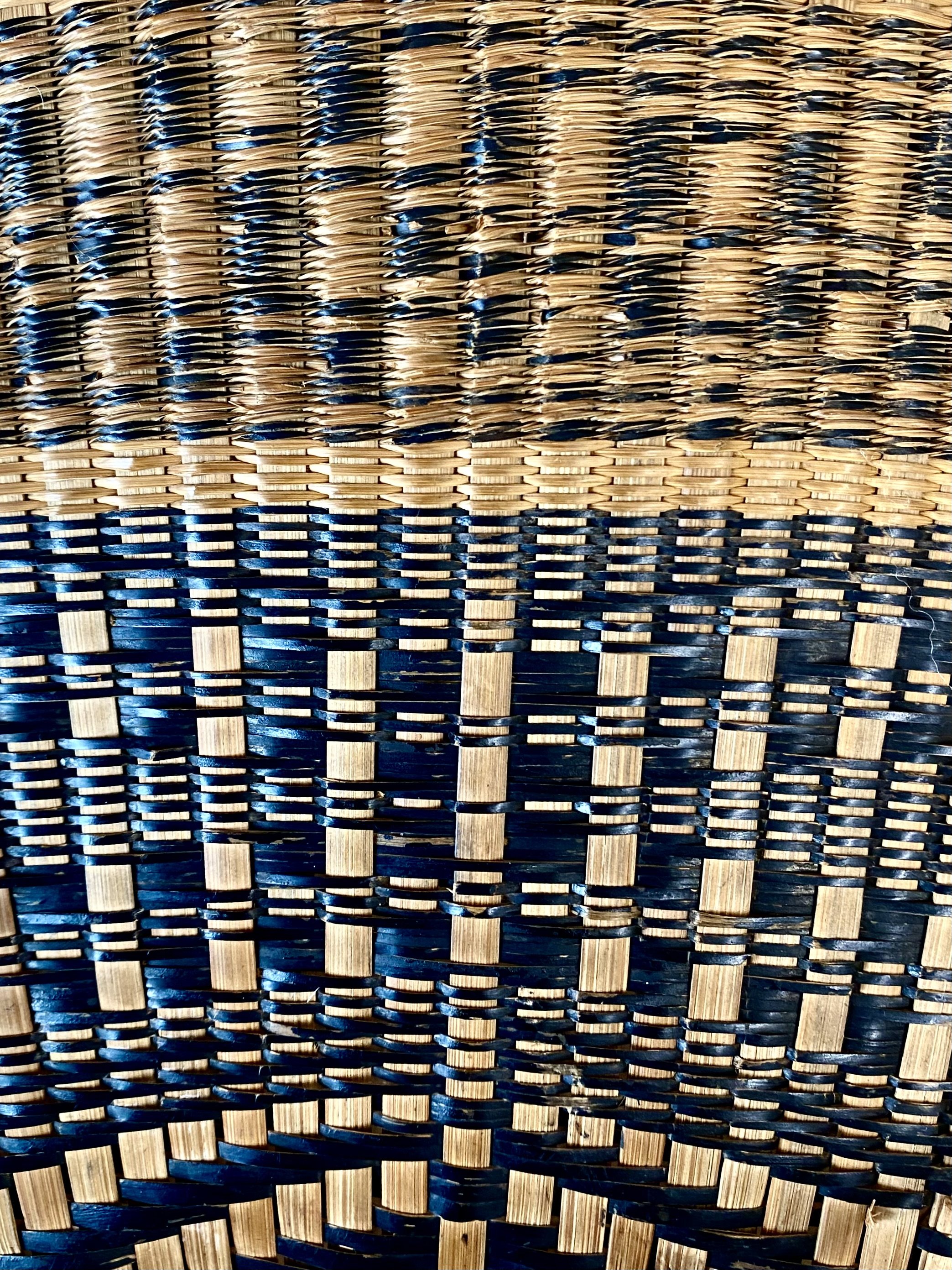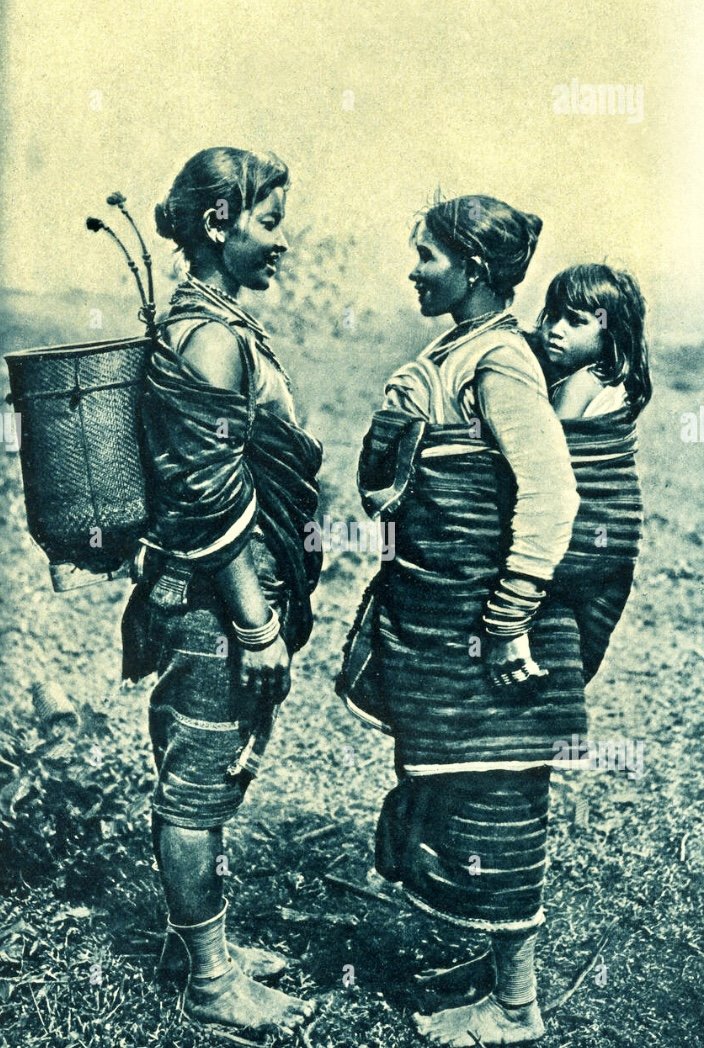 Image 1 of 7
Image 1 of 7

 Image 2 of 7
Image 2 of 7

 Image 3 of 7
Image 3 of 7

 Image 4 of 7
Image 4 of 7

 Image 5 of 7
Image 5 of 7

 Image 6 of 7
Image 6 of 7

 Image 7 of 7
Image 7 of 7








Montagnard Pack Basket
Montagnard pack basket, made of split bamboo with a bent-wood base. Mid-20th century. Montagnard ("mountain dweller") is a catch-all term for the 20-plus ethnic groups living in the Central Highlands of Vietnam, including the Jarai, Rade, Bahnar, Koho, Mnong, and Stieng. The term dates from the days of colonial French Indochina, but we use it here for lack of a better one.
In modern Vietnam, the preferred term for the Highland tribes is đồng bào, or "compatriots." That said, the tribes have historically experienced conflict with the dominant Vietnamese Kinh population. The former follow a variety of religious practices (from animism to Christianity) and generally practice a matrilineal system, with leadership roles and property passed down from mothers to daughters. The Kinh are mostly Buddhist, and practice a patriarchal system. Western powers have taken advantage of these differences in their attempts to control and exploit the region.
We are not sure which tribe is responsible for this excellent basket. At the top of the basket next to the shoulder straps, there are two woven zoomorphic forms, looking backwards. We don't know exactly what these creatures represent, but they are reminiscent of the dragon figures that sometimes ornament traditional Chinese baby clothing and carriers. Note the historical image of a Montagnard woman with a pack basket sporting two antennae-like protruberances. Wonderful and mysterious!
Montagnard pack basket, made of split bamboo with a bent-wood base. Mid-20th century. Montagnard ("mountain dweller") is a catch-all term for the 20-plus ethnic groups living in the Central Highlands of Vietnam, including the Jarai, Rade, Bahnar, Koho, Mnong, and Stieng. The term dates from the days of colonial French Indochina, but we use it here for lack of a better one.
In modern Vietnam, the preferred term for the Highland tribes is đồng bào, or "compatriots." That said, the tribes have historically experienced conflict with the dominant Vietnamese Kinh population. The former follow a variety of religious practices (from animism to Christianity) and generally practice a matrilineal system, with leadership roles and property passed down from mothers to daughters. The Kinh are mostly Buddhist, and practice a patriarchal system. Western powers have taken advantage of these differences in their attempts to control and exploit the region.
We are not sure which tribe is responsible for this excellent basket. At the top of the basket next to the shoulder straps, there are two woven zoomorphic forms, looking backwards. We don't know exactly what these creatures represent, but they are reminiscent of the dragon figures that sometimes ornament traditional Chinese baby clothing and carriers. Note the historical image of a Montagnard woman with a pack basket sporting two antennae-like protruberances. Wonderful and mysterious!